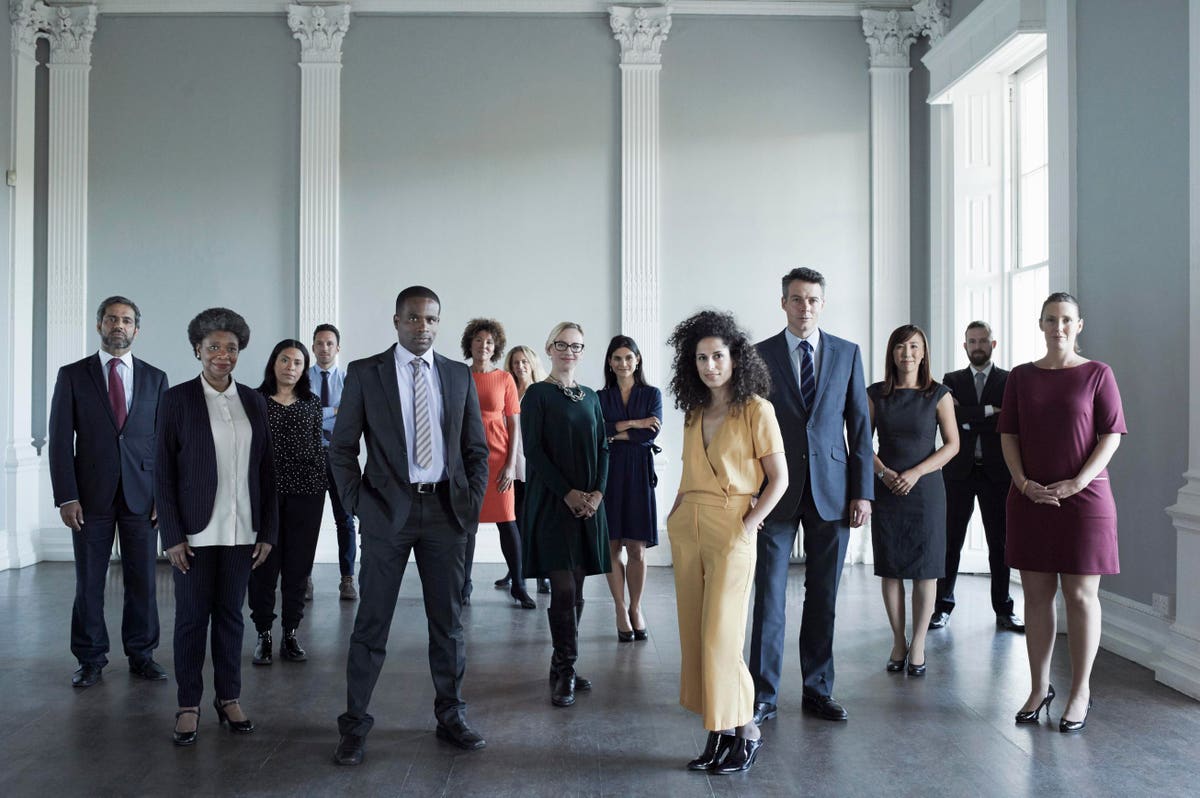Tapestry, Inc., the fashion company that owns Coach and Kate Spade, just finished its fourth quarter with a weak sales performance. Revenues were flat at $1.6 billion, which capped a flat year overall at $6.7 billion. But that news was overshadowed by the bigger announcement that Tapestry had reached a definitive agreement to acquire Capri Holdings, the parent of Versace and Michael Kors, for $8.5 billion in an all cash offer of $57 per share. The two fashion conglomerates generate about $12 billion in combined revenue.
Capri did even worse in its most recent quarter, which ended July 1, with revenues down 9.6% to $1.2 billion. And it was flat in fiscal 2023, with year-end revenues at $5.6 billion.
Given the acquisition news, or what might be called a merger of near equals, it’s hard to view Tapestry’s results without factoring in Capri.
Together, the combined company and its six brands face growth challenges in the U.S. luxury market that has gone sideways recently, especially among aspirational consumers who are the primary target for the flagship brands Coach and Michael Kors. The Tapestry pro forma figures the Americas will make up 61% of its market.
Further, each company depends heavily on these two brands for revenues. Nearly three-fourths of Tapestry revenues are generated by Coach and some 70% of Capri’s by Michael Kors and neither had a strong year, with Coach revenues up 1% and Michael Kors down 2%.
None of the other brands under the two flagships show much spark either. Capri’s Versace and Jimmy Choo brands have true-luxury cred, but Versace gained only 2% last year, ending with $1.1 billion, and Jimmy Choo was up 3% to $633 million. Tapestry’s Kate Spade dropped 2% to $1.4 billion, and Stuart Weitzman tanked 11% to $282 million.
All in all, Tapestry’s CEO Joanne Crevoiserat has a rough road ahead, and the tools in her toolbox are largely operational and financial, good for managing the combined enterprise, but not necessarily the kind of marketing or branding prowess required to go up against the industry’s leading luxury fashion conglomerates, LVMH ($85 billion) and Kering ($22 billion).
“In front of the incredible results obtained recently by the European luxury giants such as LVMH, Kering, but also Hermès, Chanel and many more, it was not surprising to see the emergence of potential competitors,” observed Corine Cohen, professor of luxury brand marketing and management at EDC Paris Business School.
“The Tapestry/Capri conglomerate won’t be the only one in the coming years, but not all of them will succeed,” she said, adding, “Managing a luxury brand is very specific.”
Synergies Gain Applause
Investment firm TD Cowen rates the deal attractive due to its scale. “The combined company could generate $12 billion in revenue or own 6% of the $200 billion global luxury apparel and and accessories market.”
The firm also favors the expected synergies that will be realized, most especially in the strong digital capabilities Tapestry will lend to Capri. Tapestry generates some 29% of revenues digitally compared with 18% for Capri.
Synergies are also possible by bringing insights from Michael Kors’ apparel and lifestyle assortment to Coach, which hasn’t been as successful in extending the brand beyond handbags and other accessories. Only about 5% of Tapestry’s total revenues come from apparel versus 18% for Capri.
And conversely, it believes that Tapestry’s “impressive execution of Coach” could help turn around the Michael Kors brand.
Leveraging prime retail real estate will be another advantage the combined entity will realize, according to JLL’s
JLL
“Before they didn’t have the clout to go up against the 900-pound gorillas, like LVMH, Kering or Richemont, in prime space in the A-plus malls. Now they will be better positioned,” he said.
“It makes a lot of sense on many different levels. Actually, I’m surprised it didn’t happen sooner,” he added.
Human Factors
Aside from the quantifiable dollar-and-cents surrounding the deal, which all add up, numerous unquantifiable human factors will ultimately make or break its long-term success.
According to a seminal Harvard Business Review article, the failure rate for mergers and acquisitions runs between 70% to 90%, and research from Luc Renneboog and C. Vansteenkiste of Tilburg University’s Center for Economic Research, entitled “Failure and Success in Mergers and Acquisitions,” found the “ex-ante probability of a successful and profitable takeover of a public company is low.”
In other words, the bigger they are, the harder they’ll fall.
Among the factors that predict a more positive M&A outcome is if the bidder and target company operate in the same industry and have some product market overlap. Tapestry and Capri check that box.
However, poor merger execution and integration is often caused by a “leadership gap,” with CEO overconfidence identified as the “main driver of underperformance.” Another cause of failure is a clash between corporate cultures. Because these two firms have been fierce competitors for years, such a corporate culture clash is a distinct possibility.
As outside observers, it’s impossible to determine the positive or negative impacts of the combined corporate culture, and it’s probably just as difficult for those inside the companies too. Upon closing, the company will total 33,000 employees, almost double the number CEO Crevoiserat currently manages. Tapestry did not answer my request for comment.
And while Crevoiserat acknowledges team building as a key to her career success in an interview with Diane Brady, she’ll have personally built only about half the management team that will move the company forward. No doubt, the incoming Capri management team will have to adjust.
“Luxury is high-touch, so the human-to-human interaction is critical,” observed Daniel André Langer, the CEO of consultancy Équité and professor of luxury at Pepperdine and NYU. Creativity and innovation spring from that human interaction.
Crevoiserat and her leadership team will have to tap that human potential. It can be amplified by bringing the two corporate cultures together – iron sharpens iron – or it can lead to inevitable friction when 33,000 bodies bump against each other.
“The CEO and the leadership team have to put enough emphasis and focus on the brands and remember that you can have the best financial synergies in mind, but they have to translate into the individual brand equities,” Langer said.
And that puts the emphasis on the people who will lead and manage each individual brand. And under the new expanded corporate structure, they must also play well with each other.
Integration Or Assimilation
“There is broad consensus from research that acquisition success tends to increase with experience,” wrote Professor Vladimir Pucik and Paul Evans of investment banking firm CRI Capital Advisor in Managing Complex Mergers.
But Crevoiserat wasn’t with Tapestry through its two previous acquisitions, Stuart Weitzman in 2015 and Kate Spade in 2017. And given the exponentially greater complexity of the Capri acquisition, she faces a steep learning curve.
“There is no shortage of evidence that attention to ‘soft’ factors or people issues is one of the most critical elements in making acquisition strategy work,” they continued. “However well the merger has been planned and prepared, there is always ‘merger syndrome.’”
People’s natural reaction to stress causes it. “For those taken over, there is invariably a sense of being losers,” which can result in feelings of “fatalism, bitterness, wistful regret.”
For the acquiring company – the “victors” – the merger syndrome can manifest in feelings of condescension, which can “only worsen the post-merger integration problems.”
The merger syndrome can be further aggravated when post-merger integration manifests as assimilation instead. Integration and assimilation are two different processes, the authors explained.
Assimilation is where the acquired company is made over to be just like the purchaser, whereas true integration puts the emphasis on “capturing hidden synergies by swapping and leveraging capabilities,” they explained. Integration is ultimately desired, but assimilation is often forced upon the acquired company.
No matter which path Tapestry follows, it faces the prospect of losing key employees – “a major contributory factor to the failure of acquisitions,” because “the best will go first since they have more choices.”
During the heady days following the announcement, most acquirers emphasize the synergies to be realized through integration, as Tapestry is doing now, but a look back at its most recent acquisition, Kate Spade, suggests that assimilation was the process followed.
What Happened With Kate Spade
When the initial announcement of the acquisition of Kate Spade broke in May 2017, before Coach became Tapestry, it promised, “Coach is focused on preserving Kate Spade’s brand independence as well as retaining key talent, ensuring a smooth transition to Coach, Inc.’s ownership.”
Then, in August of that year, Kate Spade’s CEO Craig Leavitt departed, not unexpectedly, but creative director Deborah Lloyd left shortly after too.
“How Tapestry integrated Kate Spade was choppy,” observed financial advisor and analyst Berna Barshay, who goes by @HedgeFundGirl. “The first thing they did was lose the brand’s ‘creative horse.’ I closely followed Kate Spade and thought Deborah was the greatest thing about that company.”
From Barshay’s perspective, Coach tried to make over Kate Spade to be more like Coach with the result, “Kate Spade is less differentiated now.”
She observed, “They over-corporatized it. Everything they did seemed to push it closer to Coach. They took away much of the brand’s whimsy. The brand is more boring than it was before.”
The numbers don’t lie. In 2018, after a year under Tapestry, Kate Spade generated $1.3 billion in revenues, accounting for 21.8% of Tapestry’s total sales.
It got a bump in 2019, with sales rising to just under $1.4 billion and generating 22.7% of total revenues. That gain came after increasing the number of Kate Spade stores by nearly 20% to 407. However, comparable sales declined by 7% that year.
Kate Spade settled back to $1.1 billion in 2020 and $1.2 billion in 2021, then got another boost in 2022, with sales rising by 20% to $1.45 billion, but its share of total revenues dropped to 21.6%. This year’s sales dropped 2% to $1.42 billion and its share of total revenue declined to 21.3%.
Final Thoughts
The integration or assimilation of Capri and its three brands into Tapestry is fraught with challenges, no matter how good the idea looks on paper. Certainly, the new Tapestry will realize cost synergies and gain supply chain and real estate muscle.
But growth will be the key challenge. “Growth is going to come from innovation and creativity,” said Barshay. “In fashion, you got to take some big swings which bring risks. I don’t know if they are willing to take them.”
One danger for the leadership team is to put more emphasis on the companies’ flagships brands, Coach and Michael Kors, that generate the bulk of revenues. “These are mature brands that don’t have a strong long-term growth trajectory,” Barshay warned.
Ultimately, growth must come from the smaller brands, especially Versace and Jimmy Choo, which have potential that Capri hasn’t begun to tap to her mind. But the prospects look dim given Tapestry’s track record with Kate Spade and Stuart Weitzman, which Tapestry hasn’t hit out of the park yet.
“It’s going to be fascinating to watch,” observed Équité Langer. “The next two years are going to be critical. Will they be able to retain talent and relatively quickly understand the synergies between the brands?
“But they also have to understand where the differences are in terms of customer groups, and then make sure that the profile of each of the brands stays very well managed in its space,” he concluded.
That will be tough since the brands overlap to such an extent and competed against each other for many years. Now, sworn brand enemies must become friends overnight. That could be a hard pill for many in both companies to swallow.
See also:
Read the full article here





